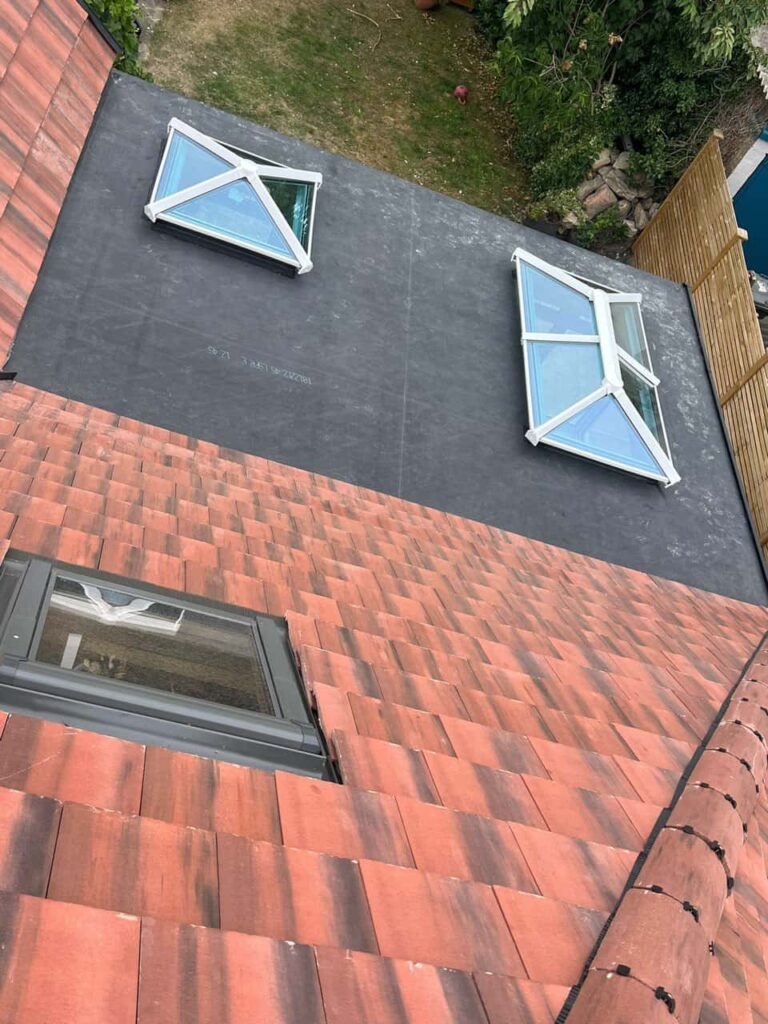Hip roofs are a popular choice for homeowners in the UK, known for their elegant design and enhanced stability. However, like all roof structures, hip roofs are not without their challenges. One of the most common issues encountered is sagging, which can lead to costly repairs if not addressed promptly. At Wednesfield Roofing Repairs, we have extensive experience in maintaining and repairing hip roofs across the West Midlands. In this blog post, we’ll explore the causes of sagging in hip roofs and offer practical tips on how to prevent it from happening.
Understanding Hip Roofs and Why They Sag
A hip roof is characterised by slopes on all four sides that meet at a ridge or peak, providing greater stability compared to other roof types. Despite their robustness, hip roofs can still develop structural problems over time, particularly sagging. Sagging occurs when the roof’s framework weakens, leading to a dip or bowing effect that can compromise the integrity of the entire structure.
Common Causes of Sagging in Hip Roofs
- Poor Construction or Design
Sagging often results from issues during the construction phase. If the roof was not designed with adequate support, or if low-quality materials were used, the roof may not be able to bear its own weight over time. Insufficient bracing or improperly spaced rafters can also contribute to this issue. Ensuring that your roof is built by experienced professionals with attention to detail is essential for avoiding these problems. - Excessive Weight
Hip roofs are designed to evenly distribute weight, but they can still struggle under excessive loads. Accumulation of snow, heavy tiles, or layers of roofing materials can place extra strain on the roof’s structure, leading to sagging. This is especially true for older roofs that may have been subjected to multiple re-roofing layers without proper evaluation of the roof’s load-bearing capacity. - Rotting or Decay
Over time, moisture can infiltrate a roof’s wooden components, leading to rot and decay. Damaged rafters or joists can lose their strength and contribute to sagging. This issue is more likely to occur if the roof has poor ventilation or if leaks have gone unnoticed for an extended period. Regular inspections and timely repairs are crucial to preventing rot from compromising your roof’s structural integrity. - Foundation Movement
In some cases, sagging can be attributed to movement in the building’s foundation. If the foundation settles unevenly, it can cause the roof to shift and lead to sagging. While this is less common, it’s important to be aware of how the overall structure of your home can impact the stability of your roof.
How to Prevent Sagging in Hip Roofs
- Invest in Quality Materials and Construction
The foundation of a long-lasting roof starts with quality materials and professional construction. When installing a hip roof, ensure that experienced roofers handle the project, using high-grade materials and proper bracing techniques. A well-constructed roof with appropriate support will be less prone to sagging over time. - Regular Roof Inspections and Maintenance
Regular inspections are key to spotting potential issues before they become major problems. Have your roof inspected at least once a year, especially before and after winter. Look out for signs of sagging, leaks, or damage to the rafters. If any issues are detected, addressing them early can prevent further damage and costly repairs. - Proper Ventilation and Insulation
Good ventilation and insulation are crucial for protecting your roof’s structure. Proper ventilation helps prevent moisture build-up, which can lead to rot and decay, while insulation helps manage the roof’s load by preventing excessive weight from snow accumulation. Ensuring your attic or loft space is well-ventilated and properly insulated can significantly reduce the risk of sagging. - Monitor Roof Load and Weight
Be mindful of the load your roof is carrying. If your roof has multiple layers of materials, it may be worth considering a re-roofing project that removes old layers rather than simply adding more on top. For areas prone to heavy snowfall, consider taking steps to remove excess snow from your roof during winter to reduce stress on the structure. - Address Minor Repairs Promptly
Small issues, such as a loose tile or a minor leak, can escalate into bigger problems if left unattended. Regular maintenance and prompt repairs are crucial in preventing minor faults from leading to sagging. By keeping your roof in good condition, you can extend its lifespan and avoid costly structural repairs in the future.
Why Choose Wednesfield Roofing Repairs?
At Wednesfield Roofing Repairs, we have the expertise to assess, maintain, and repair hip roofs, ensuring they remain structurally sound for years to come. Our team is dedicated to providing top-quality roofing solutions tailored to the specific needs of homeowners in Wednesfield and the surrounding West Midlands area. From thorough inspections to expert repairs, we take a proactive approach to roof maintenance, helping you prevent issues like sagging before they become major concerns.
Conclusion
Preventing sagging in hip roofs requires a combination of quality construction, regular maintenance, and timely repairs. By taking a proactive approach and working with experienced roofing professionals, you can ensure that your roof remains sturdy, safe, and visually appealing for years to come. If you’re in Wednesfield, West Midlands, and need expert roofing services, contact Wednesfield Roofing Repairs today to schedule an inspection or discuss how we can assist with your roofing needs.
Call us on: 01902 953 590
Click here to find out more about Wednesfield Roofing Repairs
Click here to complete our contact form and see how we can help with your Roofing needs.

